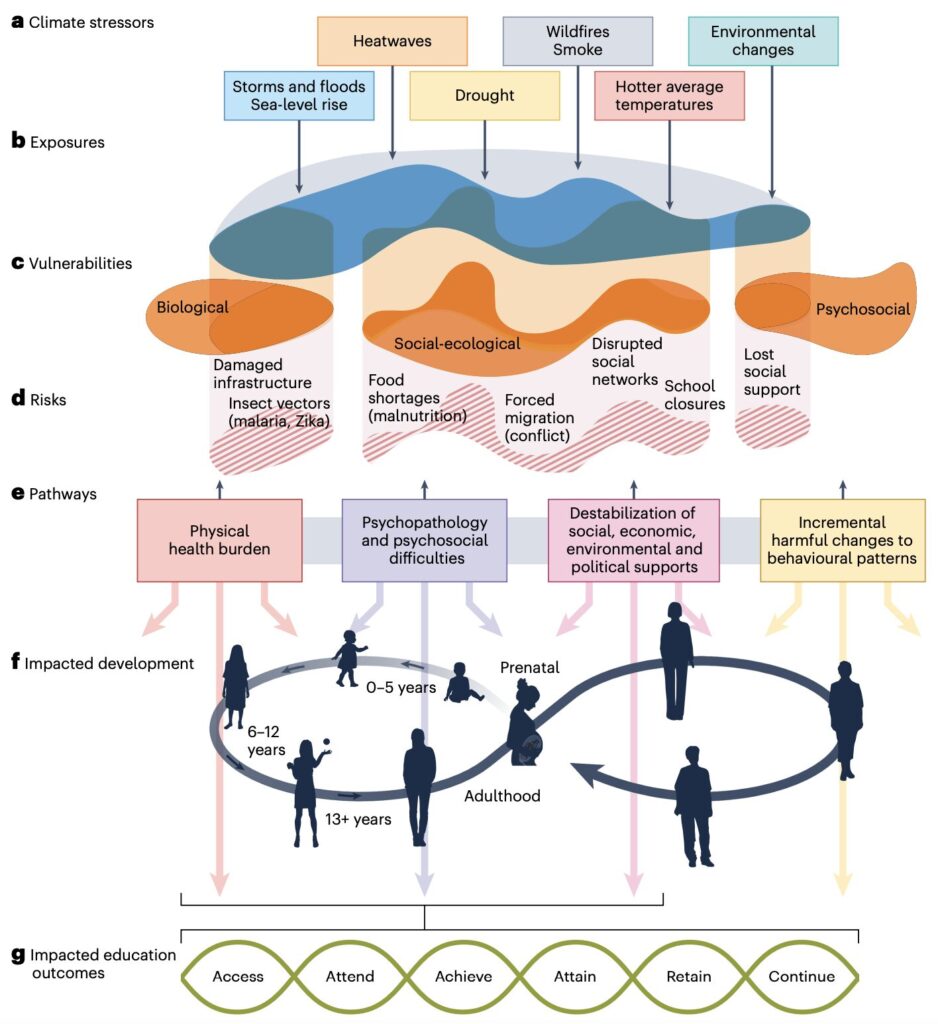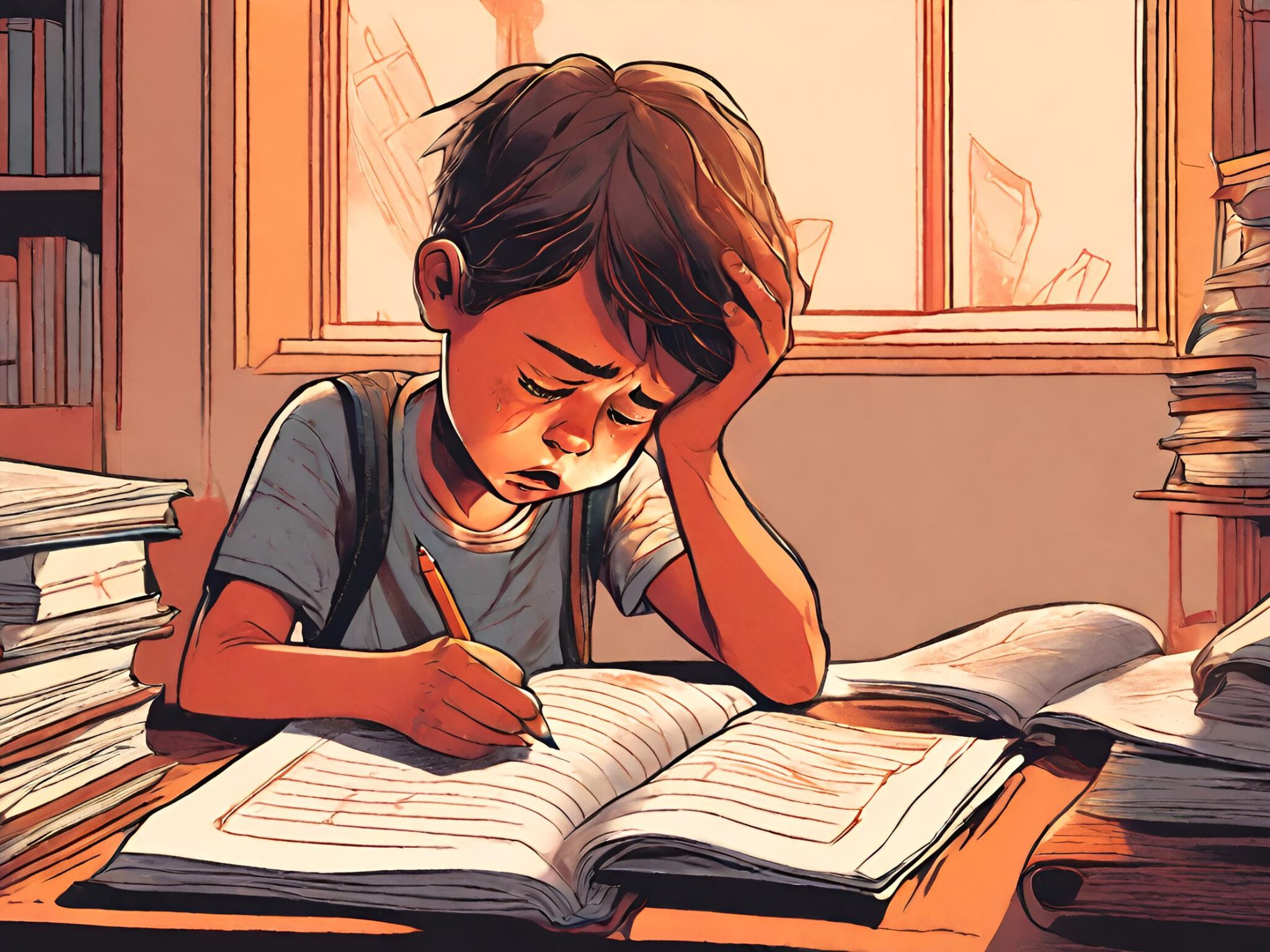Educational Injustice: How Climate Stressors are Affecting Children’s Education
5 Mins Read
A review of climate studies has revealed how global heating and extreme weather events have affected children’s education and performance in schools.
There is ample evidence about the effects of climate change on children’s mental and physical health. Over half of young people have suffered from breathing difficulties and other health issues as a result of air pollution, for example. Air quality changes mean asthma levels in American children will increase by 4-11% if post-industrial temperature rises breach 2°C, while cases of Lyme disease are forecast to rise by up to 241% per year.
There’s also an emotional and mental toll, with children experiencing trauma from major climate events like storms and fires, whose after-effects can bring about higher anxiety and post-traumatic stress rates. This stress itself can lead to illnesses later in life, like heart disease, stroke, high blood pressure and cognitive decline, according to the US EPA.
And while there’s also a growing body of literature about children’s knowledge and education about climate change in school curricula, the impact of extreme weather on their educational performance isn’t as prevalent in the public conversation. But that’s exactly what a new review of climate studies has done, examining the impact of climate stressors on children’s education.
Published in the Nature Climate Change journal, the researchers defined climate stressors as sudden events like storms, fires, heatwaves and floods, as well as more gradual events, such as rising sea levels, droughts, and vector-borne diseases. They found that heat exposure and reduced academic performance represented one of the key connections in their review.
How climate change affects children’s education

Calling heat “arguably the most intuitive, far-reaching and well-studied climate-sensitive stressor”, the study found that in the US, adolescents’ maths scored decreased significantly on days where temperatures cross 26°C, while in New York public schools, student exam scores suffered on “very hot” days over 32°C.
Similarly, in China, student scores on high-stakes university entrance exams dropped by 0.68% for every 2°C temperature increase on test days, while students’ performance on maths tests was associated with a drop equal to losing nearly a quarter of a school year. But there were longer-term knock-on effects from poor performance too, with students being less likely to graduate high school on time when exams are taken in hotter weather.
There is a relationship between exam scores and high temperatures over longer timeframes too. In South Korea, for example, students obtained lower maths and English scores on university entrance exams after school years with more days above 34°C, with a greater effect in cities that were historically cooler.
Apart from heat, researchers also looked at the impact of natural disaster like wildfires, floods and droughts. Short-term school closures in Cailforia due to wildfires have been linked with worse academic performance, while exposure to such fires has been linked to a decrease in the number of school years completed in Indonesia.
The latter was also the case for storm-exposed students in China. Meanwhile, schools in the US and Nicaragua saw test scores decline in the year immediately following a major storm. The effects of floods were also examined, with destroyed bridges in Zimbabwe meaning children couldn’t get to school, dropping rainy-season attendance by about half. In the worst flooding years, crop failures caused increased malnutrition, which caused absenteeism, poor academic performance and permanent school drop-outs, showcasing how flooding can cause traumatic stress and undermine mental health.
Droughts have similar impacts, decreasing school attendance in countries like Nigeria, Iran, Kenya and Mexico. One example looks at a severe drought in India, which was associated with a 4% drop in maths and a 2.7% drop in reading exam scores.
Additionally, vector-borne diseases like malaria and dengue are set to increase in frequency due to climate change, and these have already been linked to cognitive impairment and lower school performance. Inversely, malaria eradication has led to increased school attendance and better school grades in Uganda and Mozambique.
Vulnerable populations more adversely affected

The researchers point out several underlying factors for the link between climate stressors and academic performance. Humans have been shown to experience lower cognitive performance at higher temperatures, while hotter night-time temperatures worsen sleep (which subsequently impairs memory) and day-time temperatures limit access to play (impeding children’s wellbeing).
But the implications of the climate crisis can affect children even before they’re born. For example, kids whose mothers were pregnant during Hurricane Sandy in the US in 2012 were more likely to be diagnosed with ADHD. Wildfire exposure has been linked to decreased birth weight and pre-term birth, while hurricanes are associated with a rise in ADHD, anxiety and behavioural disorders.
Climate change also exacerbates inequalities in education access, disproportionately affecting disadvantaged groups. In the US, for example, heat affected the exam scores of racial and ethnic minorities and children in lower-income school districts more. And, in the Philippines, children with lower-income families and smaller social networks were more likely to drop out of school following a super typhoon. And in instances where girls’ education is prioritised less than boys’, their attendance and exam scores suffer more due to stressors like droughts and storms.
Likewise, regions where people are more vulnerable to climate change effects are also the regions where children receive fewer years of schooling. The researchers outline several possible measures to protect children from climate stressors. These include installing cooling technologies, effective disaster response planning, building stressor-resilient schools, and addressing systemic socioeconomic, gender and racial inequalities.
“Short-term adaptations such as retrofitting schools with air conditioning can adapt learning environments vulnerable to heat exposure, but long-term investments are also needed to limit early-life stress exposure that undermines children’s cognitive, social and emotional development,” the study states.



